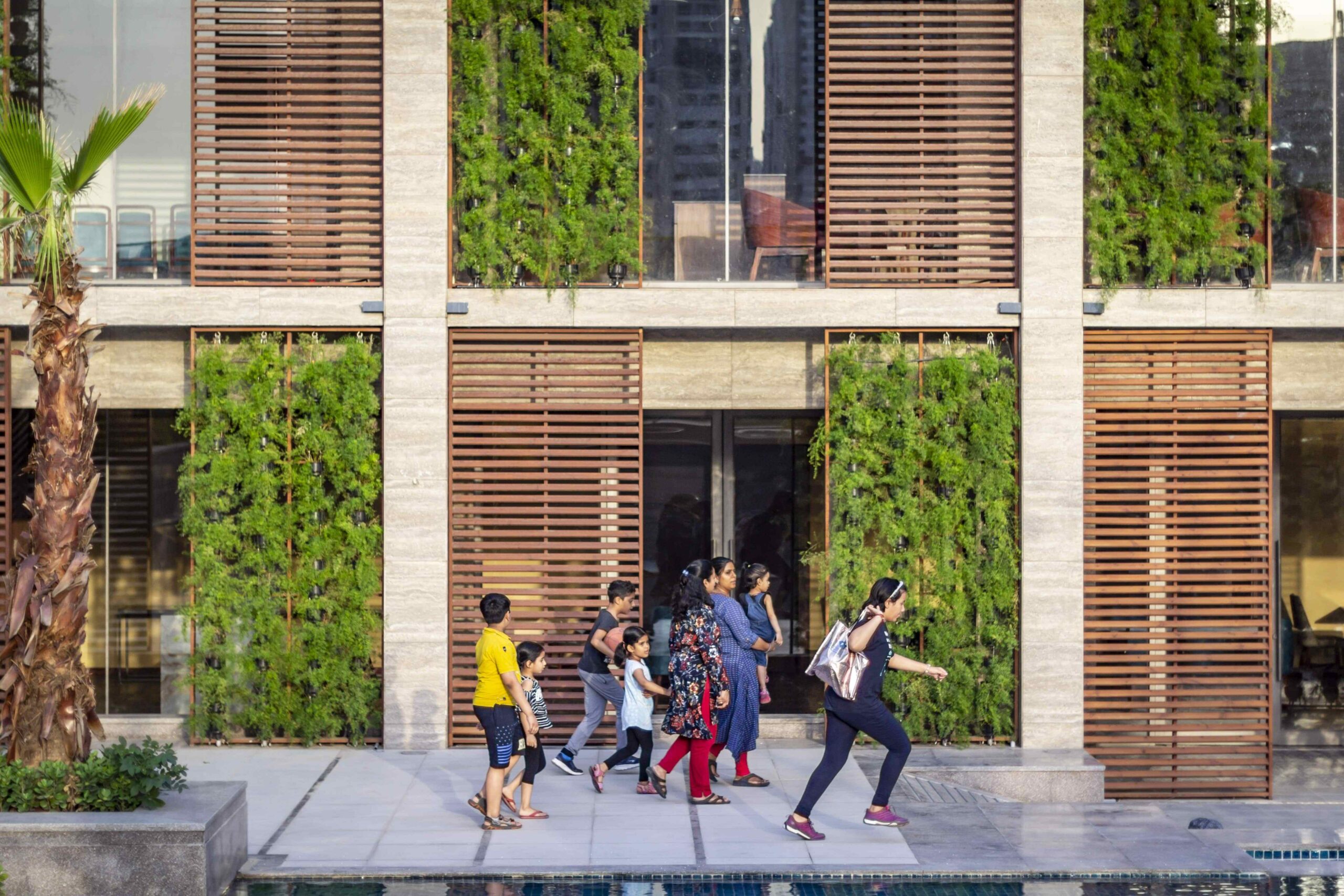At BASICS Architects, Nature-Integrated Design (NID) is not just a strategy, it is one of our core and most essential design philosophies, shaping every project we undertake.
For over two decades, BASICS Architects has developed a distinct design philosophy rooted in sustainability and human health & well-being. Led by Ar. Vinod Singhi and Ar. Ranju Singhi, the firm has evolved Nature-Integrated Design (NID) - a method that seamlessly blends architecture with nature. This approach focuses on two key aspects: Habitability of spaces and overall building Sustainability. The goal is simple: designing spaces that foster a strong relationship between humans and their respective environment while ensuring a healthier lifestyle.
Our Approach
Achieving NID is a two-pronged strategy –
- Creating Habitable spaces
- Building Sustainably

Habitability - Creating Spaces That Breathe
A truly habitable space is not just comfortable but also promotes health and well-being. In today’s world, where environmental conditions are rapidly deteriorating, true luxury isn’t just about comfort—it’s about creating spaces that support a healthy lifestyle. At BASICS, the approach to habitability starts indoors and expands outward, ensuring that every built environment, from a room to a city, enhances human experiences while respecting nature.
Key features while designing a habitable space include:
- Natural light, expansive views, and well-chosen materials enhance visual well-being, creating spaces that feel open and inviting.
- Air quality, achieved through natural ventilation and fresh air circulation, reducing dependency on mechanical systems.
- Thermal comfort plays a crucial role in a well-designed space. Strategic shading, airflow management, and humidity control ensure a balanced indoor climate.
- Thoughtful design also influences social and emotional well-being, fostering interactive and collaborative environments that enhance both personal and collective experiences.
How Do We Achieve Habitable Spaces?
To create truly habitable spaces, architecture must be deeply connected to nature. The built environment significantly impacts human interactions, making spatial experience a key design element. Features like light quality, acoustics, adaptability, and aesthetics shape enriching spaces. Designing with nature means integrating existing landscapes, wind patterns, sun paths, and water bodies, ensuring minimal disturbance to the environment.
Green elements like increased vegetation and water features enhance the microclimate, keeping spaces cooler and healthier. Climate-responsive architecture ensures buildings adapt to their surroundings rather than working against them. This includes optimizing natural light and ventilation, managing heat gain or loss, and using passive strategies to minimize energy consumption. Locally sourced, sustainable materials also play a key role, reducing environmental impact while adding natural textures and earthy tones to the built space.


Building Sustainably for the Future
Sustainability is more than a design trend—it’s a responsibility. It involves efficient use of energy, water, and materials while minimizing a building’s ecological footprint. BASICS Architects follows a minimal yet effective approach, prioritizing locally available resources and eliminating unnecessary design complexities. Thoughtfully designed façades and layouts maximize natural light and ventilation, reducing the need for artificial heating or cooling.
Key features while designing a sustainable space: A sustainable building is built to last.
- Energy consumption is crucial; reducing energy consumption, harnessing renewable sources like solar power. Thoughtful material selection ensures durability and reusability, cutting down on waste and excessive resource consumption.
- Resources – waste, water, solar, local materials, etc., even the resources consumed while making the building.
- Resilience is a key principle, ensuring that structures are adaptable, modular, and durable, hence making them future-ready.
Another crucial aspect of sustainable architecture is protecting natural habitats. Every design decision considers environmental, topographical, social, and cultural factors to ensure minimal disruption to nature. Low-impact developments help reduce carbon footprints, prevent excessive resource depletion, and minimize pollution. Sustainable construction methods focus on waste reduction and responsible material usage, ensuring that every aspect of the building process aligns with ecological preservation.
The Symbiosis Between Habitability and Sustainability
Habitable and sustainable design go hand in hand. The Nature-Integrated Design approach ensures that architecture serves both people and the planet. It fosters a seamless connection between human life and the environment, creating spaces that feel natural, functional, and enriching. As cities grow and climate challenges become more urgent, architects play a key role in shaping a sustainable future. By designing responsibly, by starting from the basics, we can create spaces that enhance life—not just for us, but for the world around us.
